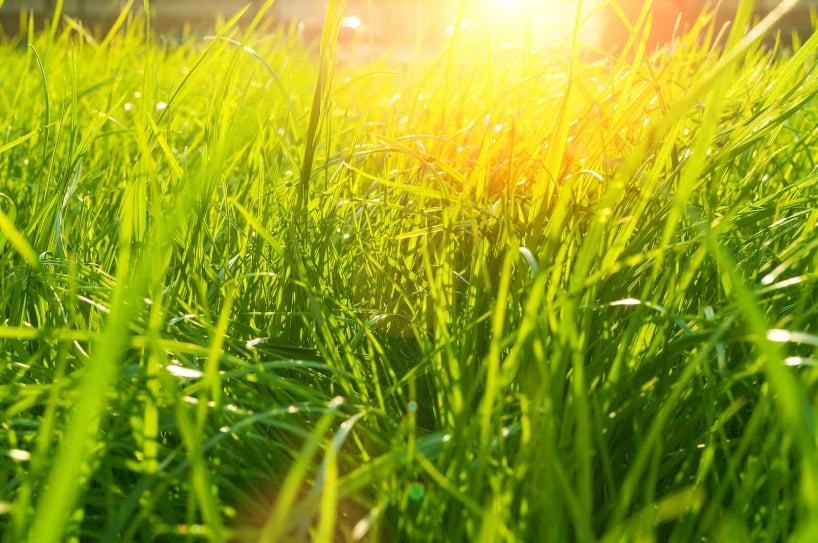
March 25th, 2022 by
If you want a gorgeous, green lawn that will be the envy of your neighbours and compete with the local bowling green then iron sulphate is a must. Iron sulphate is a lawn nutrient that feeds your grass. Here’s more about why it works and when to apply it for the best results.
What iron sulphate does for your grass
The ultimate benefit of using iron sulphate is a lush, vivid green lawn but really, that’s a by-product of all the good it’s doing your grass:
- It improves grass health
Delivering iron and nitrogen nutrients to the roots of the grass makes it stronger and healthier. This also gives it a rich green colour - It helps it resist pests, disease, drought, and frost
Healthier, stronger grass is much better positioned to fight off all the things that can blight it and make it patchy, yellow, or even kill it - It makes it tougher
Part of improving the health of the grass is making it hardier. In fact, it’s very commonly used for sports pitches to minimise damage caused by playing on it. If your lawn gets a lot of traffic or you have children and pets that use it, it can really help it stand up to heavy use - It raises the acidity of the soil
Iron sulphate very slightly raises the acidity of the soil, making it less appealing to pests such as chafer grubs and leatherjackets, which can be really hard to eradicate once an infestation has taken hold (to devastating effect).
The good news is iron sulphate is also really easy to apply. Simply dilute to the correct ratio with water (see packaging) and apply using a watering can or garden sprayer then water in well. Here are a few tips that can help you maximise its efficacy.

Use rain to your advantage
Iron sulphate requires plenty of water to be able to penetrate the ground and access the roots of your grass. With a little planning, you can take advantage of weather conditions to do much of the work for you. A forthcoming rain shower will help to soak the treatment into to grass so keep a close eye on the forecast. For even better results, apply when the ground is already wet so in between rain showers is ideal.
Cool temperatures will also help the ground retain moisture for longer.
Avoid hot, sunny conditions
Conversely, hot dry conditions can hamper the effects of iron sulphate. Dry ground won’t absorb the treatment well and very hot temperatures can increase the potency of the chemicals, and this can be too much for the grass, causing it to scorch, which really defeats the object of the exercise.
Avoid freezing conditions
We’ve already said that cool temperatures are good but very cold ones are not. Just as dry ground won’t absorb moisture well, neither will frozen ground. In fact, pouring water onto the very cold ground is likely to just result in the formation of ice, which will hinder the effects of the iron sulphate.
Apply all year round
Key times in the gardening calendar are spring and autumn, and it’s no different for iron sulphate as this can help healthy grass grow through the warmer months and help it resist the harsh conditions of winter. For consistent grass health though apply every 6-8 weeks all year round to keep topping up the nutrients and maintain excellent grass health.

Comments
Leave a reply
Your e-mail address will not be published. All fields are required



